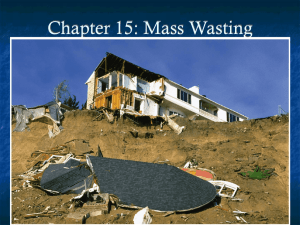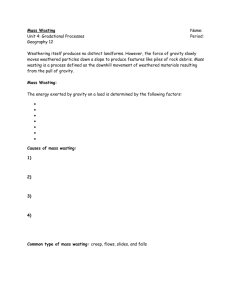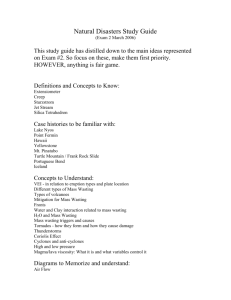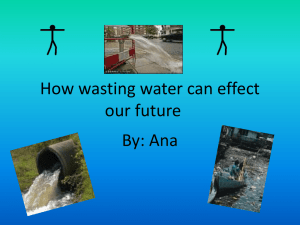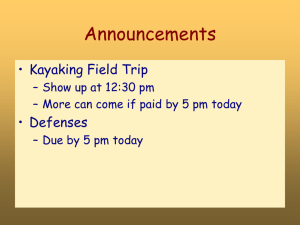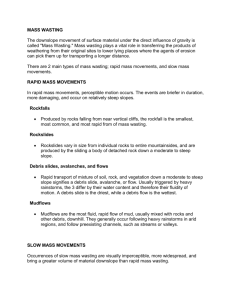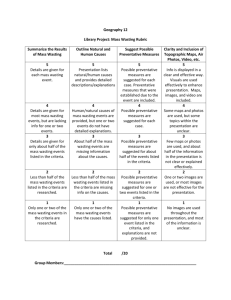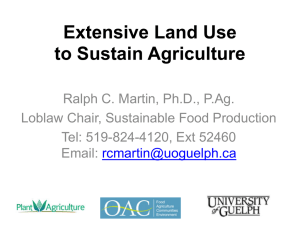ESS 106
advertisement
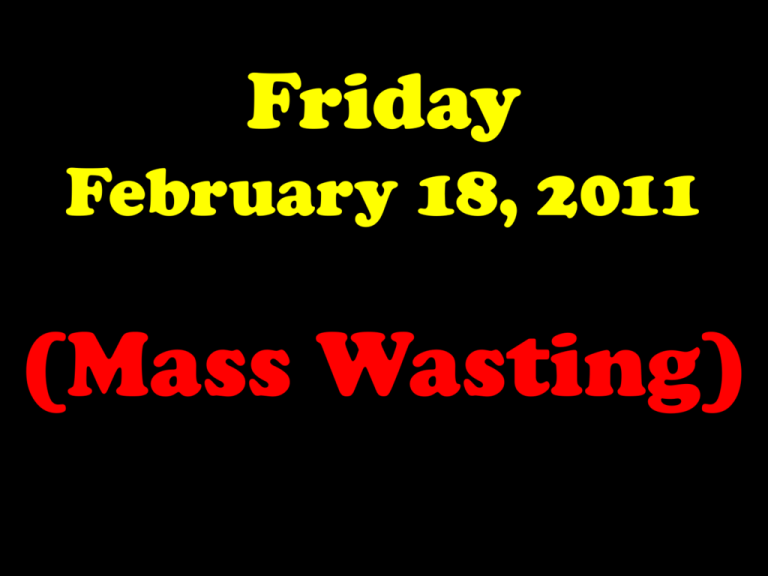
Friday February 18, 2011 (Mass Wasting) The Launch Pad Friday, 2/18/11 No Launch Pad Today. Announcements We will have a test next Tuesday. Assignment Currently Open Date Issued Date Due WS – The Rock Cycle 1/19 1/21 WS – Igneous Rocks (Part 1) 1/20 1/21 Lab – Igneous Rocks 1/21 1/21 WS – Igneous Rocks (Part 2) 1/24 1/26 PowerPoint – Common Igneous Rocks 1/24 1/26 WS – Sedimentary Rocks (Part 1) 1/25 1/27 WS – Sedimentary Rocks (Part 2) 1/26 1/28 Lab – Sedimentary Rocks 1/27 1/27 WS – Metamorphic Rocks 1/28 2/2 Lab – Metamorphic Rocks 1/31 1/31 Test 6 2/10 2/10 WS – Weathering 2/11 2/18 WS – Soil 2/15 2/22 Cornell Notes Today! What is Mass Wasting? Earth’s surface is never perfectly flat, but instead consists of slopes. Mass wasting is the down-slope movement of rock, regolith, and soil under the direct influence of gravity (the controlling force.) Factors That Trigger Mass Wasting There are several factors that are important to the triggering of mass wasting: 1) Over-steepening of slopes. • • • Unconsolidated granular particles assume a stable slope called the angle of repose. The stable slope angle is different for various materials. Over-steepened slopes are unstable. Factors That Trigger Mass Wasting 2. Removal of anchoring vegetation 3. Ground vibrations from earthquakes 4. Saturation of the material with water destroys particle cohesion. Water adds weight. The Effect of Water on Mass Wasting Types of Mass Wasting Processes Generally, each type of mass wasting process is defined by: 1. the material involved – debris, mud, earth, or rock Debris Flow Types of Mass Wasting Processes Generally, each type of mass wasting process is defined by: 2. the movement of the material Fall (freefall of pieces) Slide (material moves along a well-defined surface) Flow (material moves as a viscous fluid) Slump (rapid movement along a curved surface) A slump with an earthflow at the base Figure 4.28 A Types of Mass Wasting Processes Generally, each type of mass wasting process is defined by: 3. The rate of the movement Fast Slow Forms of Mass Wasting Rockslide (rapid, blocks of bedrock move down a slope) Debris flows composed mostly of volcanic materials are called lahars Rock Slide Forms of Mass Wasting Forms of Mass Wasting Earthflow is a rapid form of mass wasting. Earthflow typically occur on hillsides in humid regions where water has saturated the soil. Liquefaction is a special type of earthflow sometimes associated with earthquakes. Forms of Mass Wasting Creep is a slow movement of soil and regolith downhill. It can cause fences and utility poles to tilt. Forms of Mass Wasting Solifluction is a slow movement in areas underlain by permafrost. The upper (active) soil layer becomes saturated and slowly flows over a frozen surface below.
